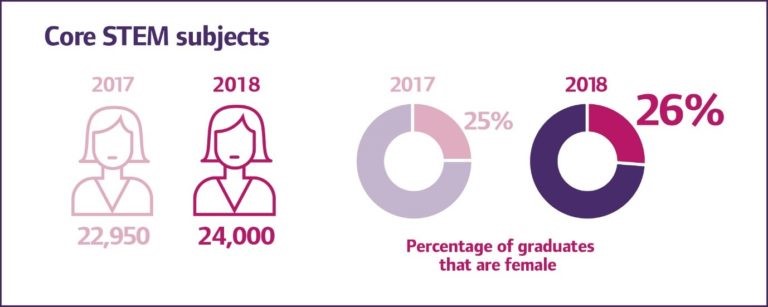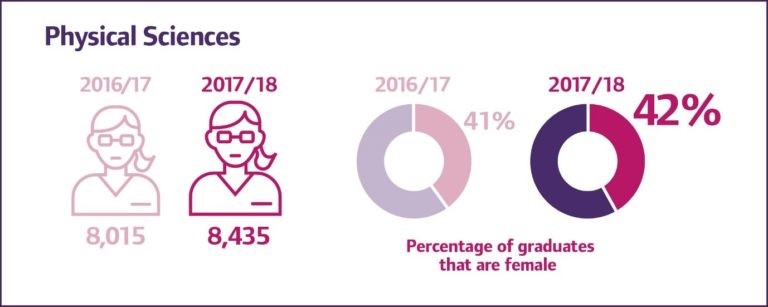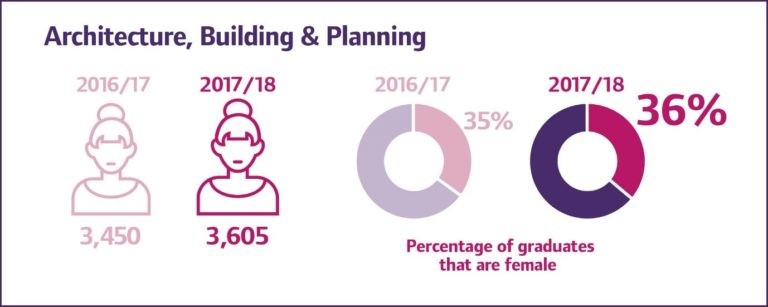The number of female higher education qualification achievements (Levels 4-6 – henceforth referred to as ‘graduates’ for simplicity) in Core STEM subject areas increased in 2018 from the 2017 number, and the percentage of the total numbers of graduates in Core STEM who were female also increased.
A year-on-year increase of over 1,000 women graduating in Core STEM means good progress is being made in attracting more women to these subjects, building a stronger talent pipeline – and over 80% of female Core STEM graduates go into professional occupations following their studies, according to official data.

The increase in the number of female core STEM graduates means that the proportion of female students graduating in Core STEM subjects has increased year-on-year. 9% of female graduates in 2018 graduated with a Core STEM qualification, up from 8% in 2017.
This means that Core STEM degrees are becoming relatively more popular with women as well as more popular in absolute terms, which is fantastic news!
Physical Sciences
The increase in the numbers of female physical sciences graduates since 2017 means that they accounted for 42% of physical sciences graduates in 2018 – so the number and percentage have both increased year on year.
In physics itself, 23% of graduates were female in 2018, which is roughly the same as the proportion of physics A Levels awarded to females.

Mathematical Sciences
The number of female mathematical sciences graduates dipped slightly from 2017 to 2018, from 3,765 to 3,690 – the only core STEM subject area to see a decrease. However, the proportion of graduates who are female has remained consistent at 39%.
Interestingly, the proportion of mathematical sciences graduates who are female is the same as the proportion of maths A-Levels awarded to females.
The proportion of female graduates in mathematics, at 38%, lagged slightly behind the average for mathematical sciences in 2018.

Computer Science
In 2018 there was a year-on-year increase in the number of female computer science graduates, as there was in 2017.
The proportion of computer science graduates who are female has remained at 15%, and the gender gap is consistent across all branches of computer science.

Engineering & Technology
The female percentage of engineering & technology graduates has remained static compared with 2017, at 15%. The good news, however, is that there has been a year-on-year numerical increase in female engineering & technology graduates.

Architecture, Building & Planning
The female proportion of architecture, building & planning graduates increased slightly in 2018, from 35% to 36%.
With 48% of graduates being female in 2018, architecture has an almost gender balanced graduate pool, while landscape gardening had more female graduates than male.

Note: Calculated from raw data taken from Higher Education Statistics Agency data on student outcomes, including figures from 2017.
